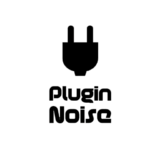2025 is a great time for music producers, as we have so many tools at our disposal. No matter what your production style and expertise are, whether it is sampling, scoring, or sound design, Native Instruments and Arturia are two brands that have innovated a lot in each of these areas.
On a surface level, I would say that Kontakt by Native Instruments is the appropriate tool for scoring musicians and composers for their physical modeling, recording, and sampling capabilities and infrastructure. On the other hand, Arturia dominates when it comes to software synths or emulations of vintage instruments, offering lush, versatile, and meticulously crafted emulations of iconic hardware synthesizers.
Both brands have plugins in all categories, including synthesizers, effects, virtual instruments, etc. That’s why I am comparing these two brands. So, if you’re looking to expand your plugin collection, where should you start? Should you prioritize Native Instruments’ sample libraries and production tools or lean into Arturia’s synth and fx collection?
I have had enough experience working with both, so I will walk you through both of these brands and their plugins, so you can decide for yourself which one you prefer. So, let’s dive right into it.
Basic Comparison: Native Instruments vs Arturia
First, we will compare the flagship bundles that feature most of the plugins that the brands offer. Arturia has its Arturia V Collection X, while Native Instruments has its Komplete 15 collection. Arturia V Collection X contains 39 synths/software titles at a price of $600 and takes up a lean 20GB of space.
- Arturia V Collection X
I find it suitable for warm, authentic, classic synth sounds, as it focuses primarily on analog emulations and vintage tools. It’s also quite efficient in terms of storage and usability and features a resizable GUI, MIDI mapping, and even in-app tutorials. It covers pretty much all vintage synths and instruments, from the DX7 to Jupyter, CMI, Mellotron, and many more.
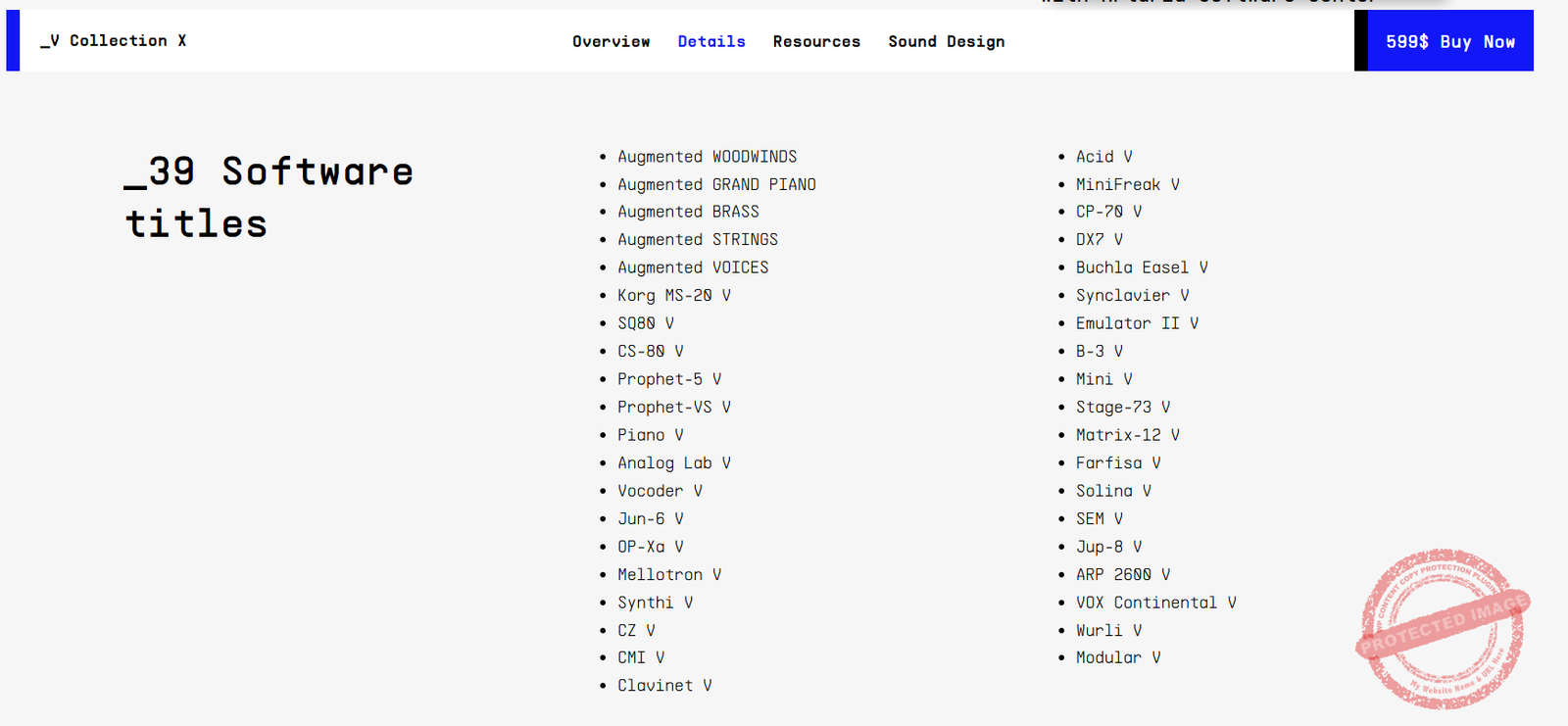
The overall experience has been pretty polished, with an intuitive sound/preset browser, keyboard compatibility, and standalone capability on each instrument. However, Arturia V8 comes up short in areas like drum libraries, which are notably missing, leaving some producers wishing for “more.”
- Arturia FX Collection 5
With the Arturia FX collection 5, you get a collection of 34 effects plugins for processing, creative, and mixing-mastering. A lot of these are also analog and vintage emulations, but the best part about Arturia FX plugins is how creative and “off-beat” they are. You get different styles of compressors, equalizers, saturators, distortion plugins, etc., at a cost of $299.
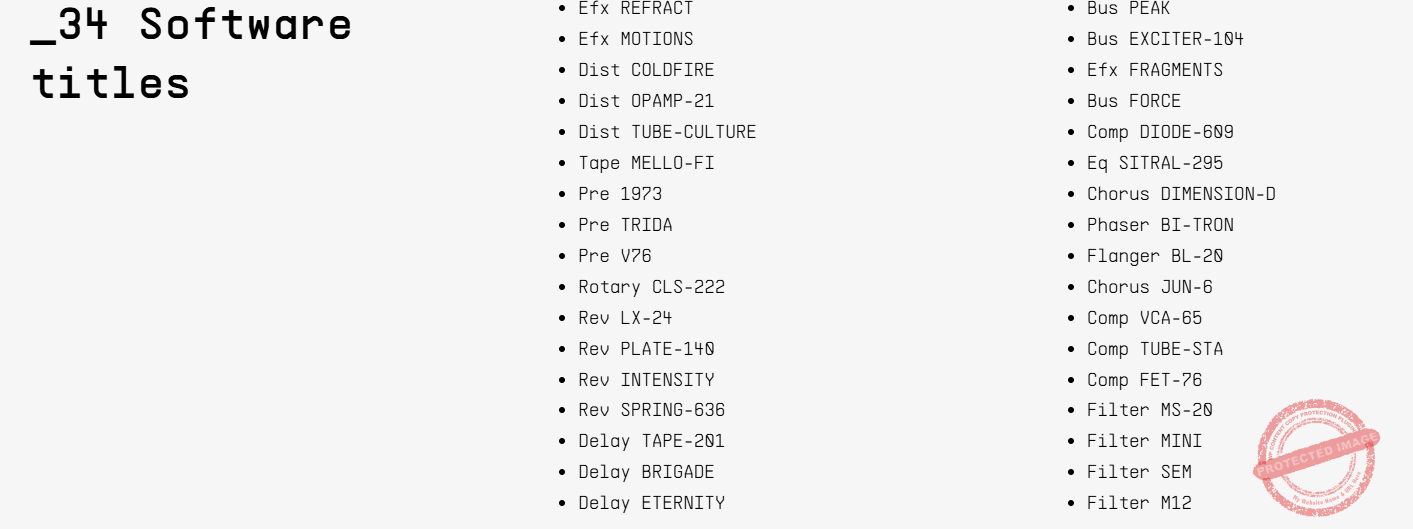
- Komplete 15 Collection
On the other hand, Komplete 15 Collector’s Edition is a massive package, offering 290 total items (165 instruments/effects alongside 126 expansions). It also costs $1700 but takes up a hefty 1100GB of space, so storage demands are much higher. Komplete 15 proves its superiority when it comes to modern sound design and versatility, making it ideal for pop, cinematic, and electronic music producers.
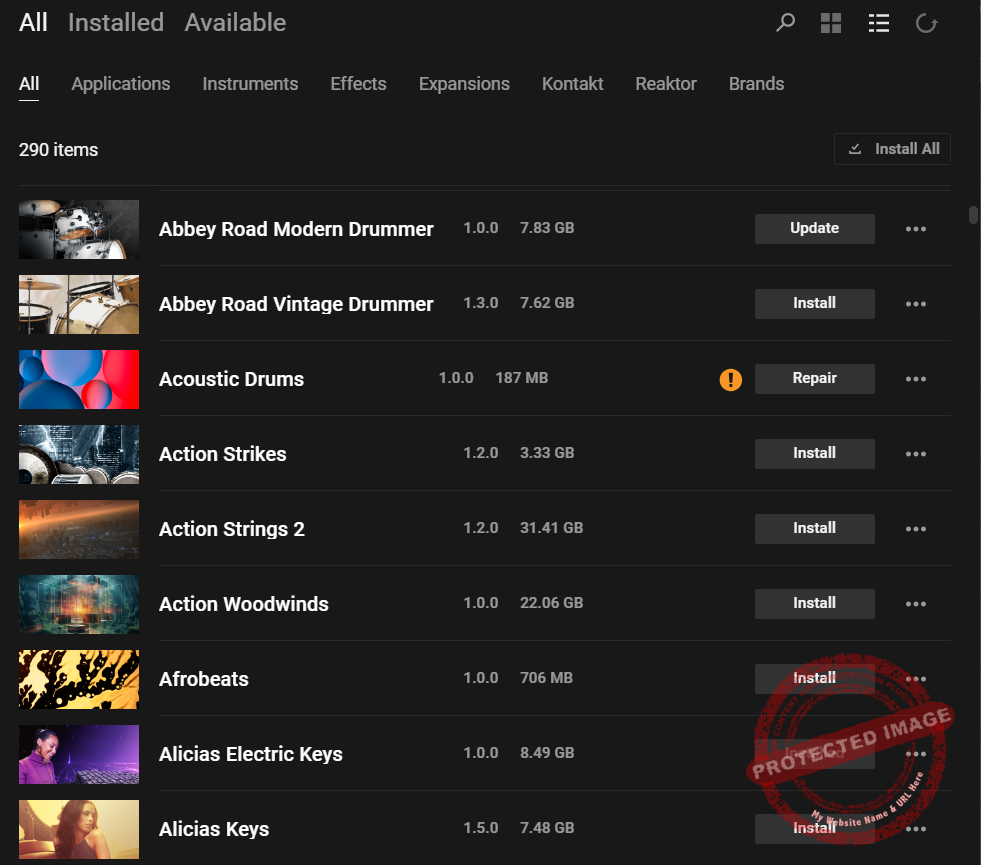
With 3 drum libraries and modern samples, it delivers great drum sounds and cutting-edge synth options. The usability is strong, with a resizable GUI, MIDI mapping, and an advanced sound/preset browser. However, it can be overwhelming, with “too many options” for some users, and its classic sounds don’t always hit the mark, often described as “thin” or lacking warmth.
There are Komplete 15 Ultimate and Standard Editions as well, which are available at $1199 (150 instruments/effects) and $599 (95 instruments/effects) price points. You can install these using the Native Acess application.
Plugins Comparison Table
Here’s a list of some of the most popular plugins from both brands.
| Category | Arturia | Native Instruments | Description |
| Software Synths | Pigments | Massive X |
Pigments is Arturia’s flagship soft synth, offering versatile wavetable and granular synthesis, while Massive X is Native Instruments’ powerhouse for rich, evolving sound design.
|
| Analog Emulations | V Collection | Monark |
V Collection features meticulously modeled classic analog synths, whereas Monark specializes in emulating the Minimoog with stunning accuracy.
|
| Samplers | CMI V | Kontakt |
Kontakt is the industry-standard sampler, providing access to an extensive library of realistic instruments and custom sample creation. CMI V is an emulation of the Fairlight CMI.
|
| Pianos | Piano V | Noire |
Piano V offers classic and modern piano emulations, while Noire delivers a beautifully sampled grand piano with felt presets for cinematic tones.
|
| Drum Machines | Spark 2 | Battery 4 |
Spark 2 is a virtual drum machine featuring both electronic and acoustic kits, while Battery 4 excels at drum sample manipulation and sequencing.
|
| Strings | N/A | Session Strings Pro |
Session Strings Pro provides high-quality sampled string ensembles with realistic articulations for orchestral or pop productions.
|
| Bass Instruments | Mini V | Scarbee Rickenbacker Bass |
Mini V is an analog bass emulation, while Scarbee Rickenbacker Bass offers realistic, sampled bass guitar sounds.
|
| FX Plugins | FX Collection | Raum |
Arturia’s FX Collection includes compressors, delays, and vintage EQs, whereas Raum is Native Instruments’ lush reverb plugin for space creation.
|
| Orchestral Tools | N/A | Symphony Series |
Symphony Series offers premium orchestral instruments for cinematic compositions and realistic orchestral scoring.
|
| Synth Ensembles | Matrix-12 V | Reaktor 6 |
Matrix-12 V is a recreation of the Oberheim Matrix-12 synth, while Reaktor 6 provides a modular platform for building and using complex synths.
|
| Guitar Tools | N/A | Guitar Rig 6 |
Guitar Rig 6 offers amp and effect simulations for guitarists, as well as a wide range of creative effects for general production.
|
| Organs | B-3 V | Vintage Organs |
Both plugins emulate classic Hammond and other vintage organs, with B-3 V focusing on tonewheel modeling and Vintage Organs offering sampled instruments.
|
| Hybrid Instruments | Augmented Strings / Augmented Voices | Play Series (Hybrid Keys, Ethereal Earth) |
Arturia’s Augmented series blends traditional and synthesized textures, while Native Instruments’ Play Series provides hybrid sounds for modern productions.
|
Arturia V Collection X: Pros and Cons
Pros:
- Value for Money
At $599, the V Collection X offers immense value by bundling 39 instruments, soundbanks, and updates into one cohesive package. You get over 15,000 sounds in total, alongside 450 new presets. The V FX Collection also gives a huge bank of 34 FX plugins at $299.
- High-Quality Sounds and Emulations
I think Arturia has the best collection of analog emulations. The quality is also at par with the industry standards, with UAD and Brainworx being some tough contenders. However, their collection is not as expensive as Arturia’s.
Their hardware experience translates seamlessly to software, with instruments like the Mini V4, Acid V, Augmented Grand Piano, and the newly added Augmented Brass/Woodwinds sounding incredibly realistic and polished.
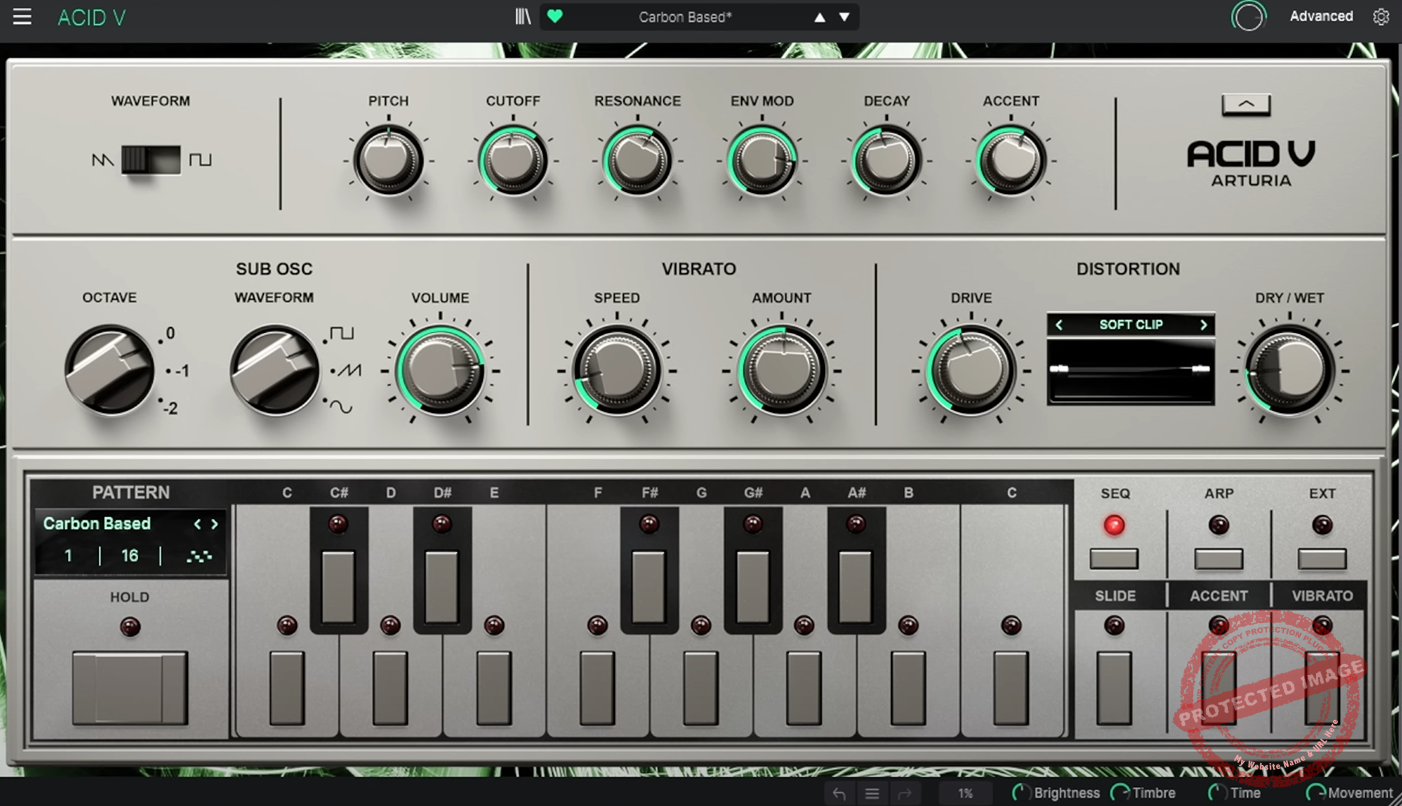
- Analog Lab Integration
Analog Lab is a solid addition that acts as the central hub, providing quick access to all instruments and sounds in a streamlined and intuitive interface. Combined with Arturia’s MIDI controllers, it offers a hands-on, hardware-like experience for live performance or studio work.
Cons:
- Focused on Vintage and Analog Sound
While the collection excels at emulating classic synthesizers and instruments, it may not appeal to producers looking for more cutting-edge, futuristic, or experimental tools.
- Overwhelming Library for Beginners
With over 15,000 sounds and 39 instruments, the sheer volume of options can overwhelm beginners. Navigating through presets and learning each instrument’s nuances may have a steep learning curve.
- Requires Significant Storage
The V Collection X, with its extensive library and high-quality soundbanks, can occupy a substantial amount of disk space, which may necessitate external storage.
- Limited Expansion
Unlike other ecosystems (e.g., Native Instruments Komplete), Arturia’s expansions are smaller.
Native Instruments Komplete 15: Pros and Cons
Pros:
- Unparalleled Breadth and Depth
Komplete 15 offers a staggering amount of content, with up to 165 instruments/effects and over 150,000 sounds in the Collector’s Edition. Whether you’re a composer, beatmaker, or sound designer, the suite includes tools for virtually any genre or application.
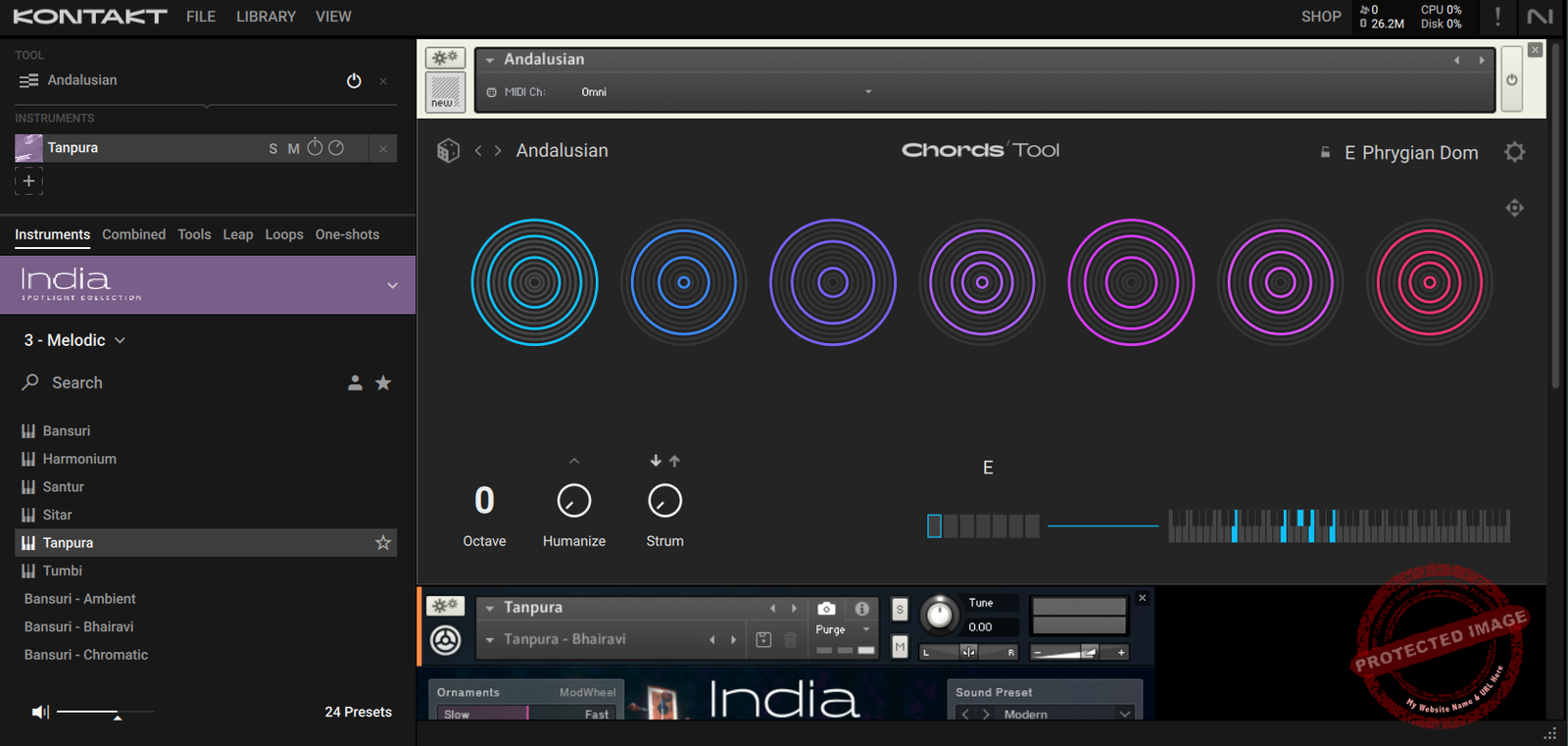
- Flexible Tiered Pricing
With three editions: Standard ($599), Ultimate ($1,199), and Collector’s ($1,799), you can choose the bundle that best suits your needs and budget. Upgrade paths are also available, providing flexibility for existing NI users. I personally use the Collector’s Edition, as it has all the instruments I need.
- Kontakt 8: The Heart of the Collection
I love the new Kontakt 8 updates that introduced Phrases, Chords, and other similar tools that help me automate a lot of music theory and composition parts and can generate creative ideas, too. Its intuitive UI and reduced CPU load further enhance workflow efficiency.
- Cutting-Edge Sound Design
Komplete 15 includes industry-standard synths like Massive, FM8, and Reaktor, providing unmatched tools for crafting unique, futuristic, and experimental sounds. Features like Leap Mode and one-shots/loops simplify complex sound design.
- Extensive Expansions and Sound Packs
The package comes with over 125 Expansions in the Collector’s Edition, covering genres like EDM, hip-hop, cinematic, and ambient. Expansions are highly playable, offering ready-made kits and loops to jumpstart creativity.
Cons:
- Steep Price for Collector’s Edition
While the Standard version is affordable, the Collector’s Edition ($1,799) may be prohibitively expensive for beginners or hobbyists. The value is excellent, but in my opinion, the high price can be a barrier.
- Complex Installation Process
Native Access does simplify installation, but downloading over 1 TB of content can take days, depending on internet speed. I had to order an extra SSD to tore the libraries, so that cost also must be accounted.
- Learning Curve
The sheer scope of Komplete 15 can overwhelm beginners. Learning to navigate Kontakt, Reaktor, and other instruments may require significant time and effort.
- Heavy on CPU for Some Instruments
Some of the flagship instruments, especially when using multiple instances or combining layers, can be resource-heavy. If you have an older or less powerful system, you may experience performance issues.
Synth Plugins: Arturia vs native Instruments
Sound Design: Analog vs. Modern
For me, Arturia’s biggest strength is its ability to bring classic analog synths into the digital world. Their emulations feel alive like they’ve captured the soul of the hardware. Synths like the Mini V (Minimoog) and Jupiter-8 V are just dripping with that warm, nostalgic character.
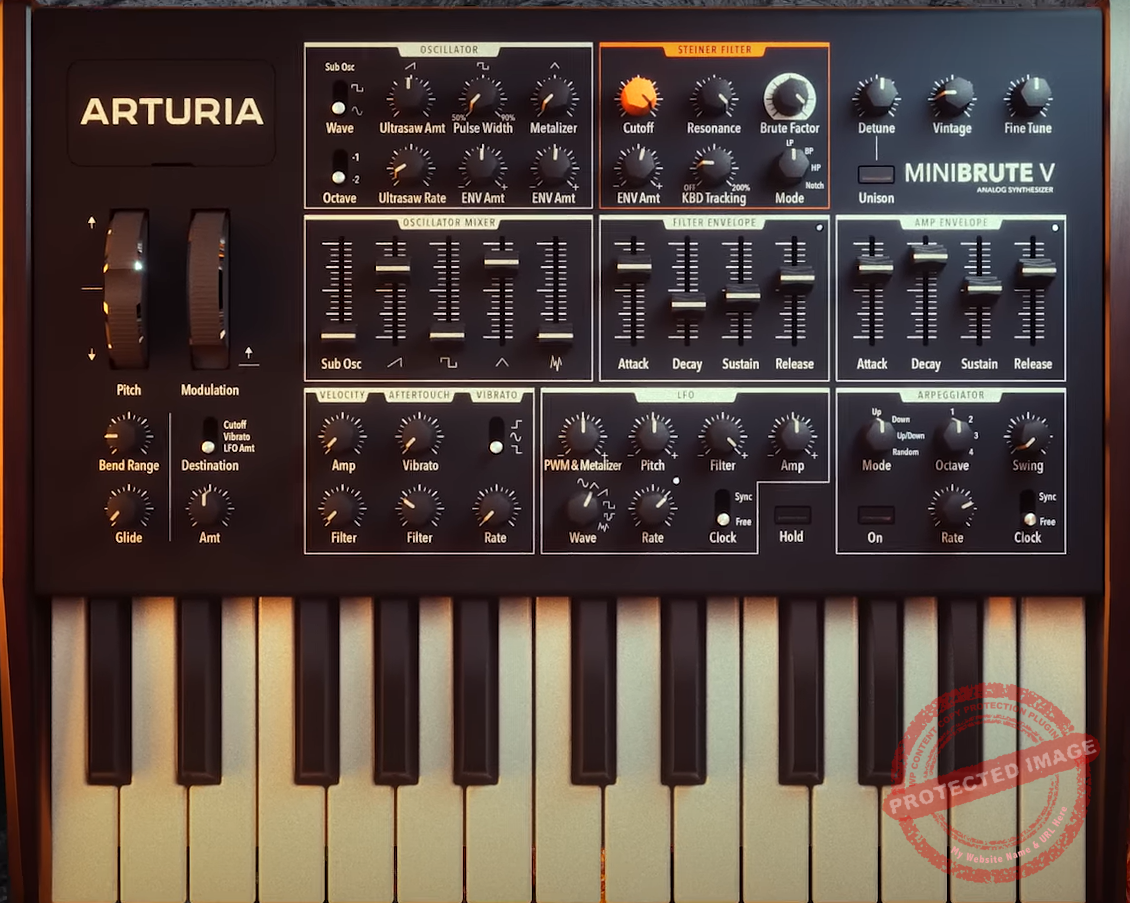
When I’m working on a retro-sounding track or scoring something with a vintage vibe, these plugins just hit the mark. And then there’s Pigments, which bridges the gap between old-school analog and futuristic sound design. With its dual-engine setup, I can blend analog-style oscillators with wavetables or even samples.
Native Instruments takes a different approach with its synths. It has Massive X, which is all about creating bold, modern sounds. It’s the synth I reach for when I need something gritty, futuristic, or totally out-of-this-world. The depth of modulation and the way you can route things is insane.
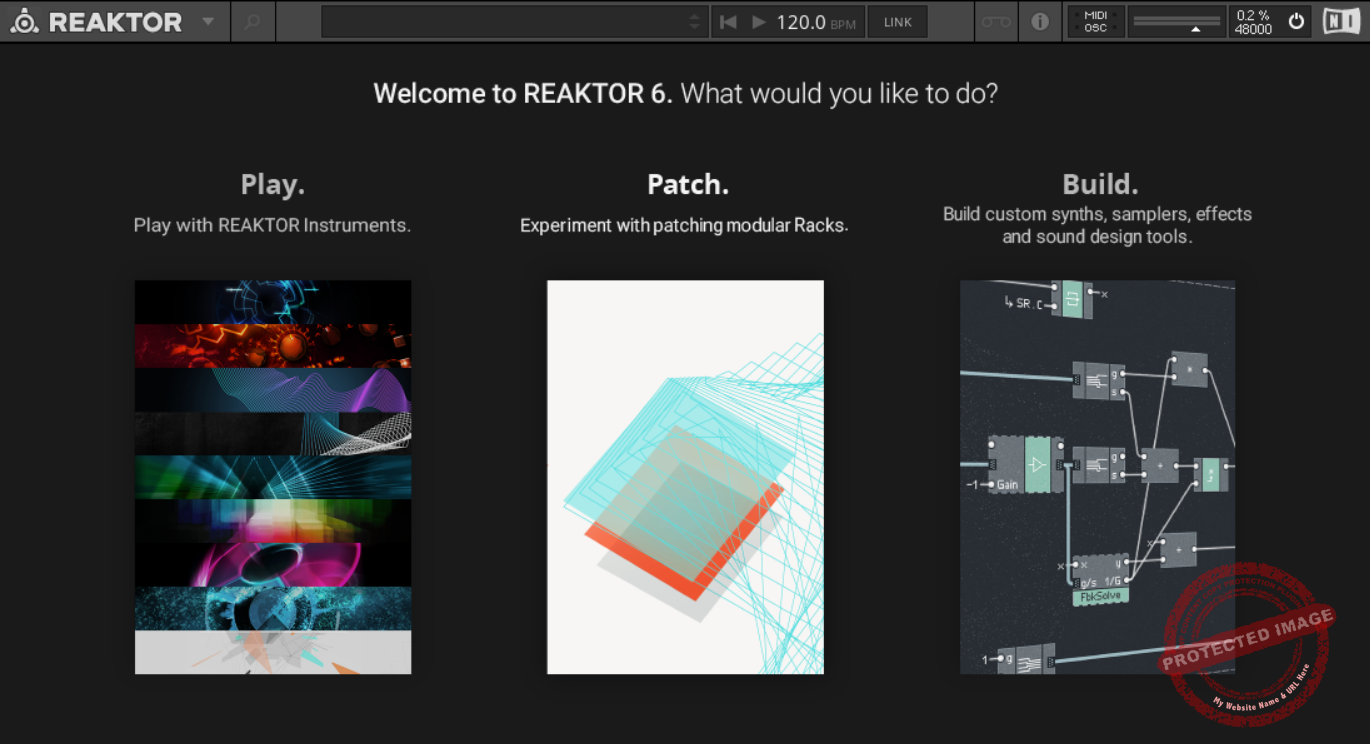
It can get overwhelming at times, but once you figure out how it all works, it’s incredibly rewarding. And then there’s Reaktor, which is… well, it’s its own universe. I’ve built custom synths and effects in Reaktor, and every time I use it, I feel like I’m unlocking new possibilities. It’s definitely not as straightforward as Arturia’s synths, but if you’re into experimenting, it’s worth the effort.
Ease of Use: Friendly vs. Deep Dive
I’ll admit that when I first started using Arturia’s synths, I was quite easily drawn into them because of how intuitive they were. The interfaces mimic the original hardware layouts, so it feels like you’re sitting in front of the real thing. That familiarity is great when you want to jump in and start making music right away.
Pigments is even better, more modern, and colorful, and it gives you this clear visual feedback for modulation and sound design. Native Instruments is a bit different. Massive X has a sleek, futuristic interface, but it can feel a little intimidating at first. Both Massive and Pigments have complicated workflows, though.
Massive X, with its wavetable workflow, however, rewards patience and exploration. Once you get past the initial learning curve, it’s really rewarding, especially for sound designers. It encourages your ‘knack’ for creating sounds from scratch by providing you with the right sculpting tools.
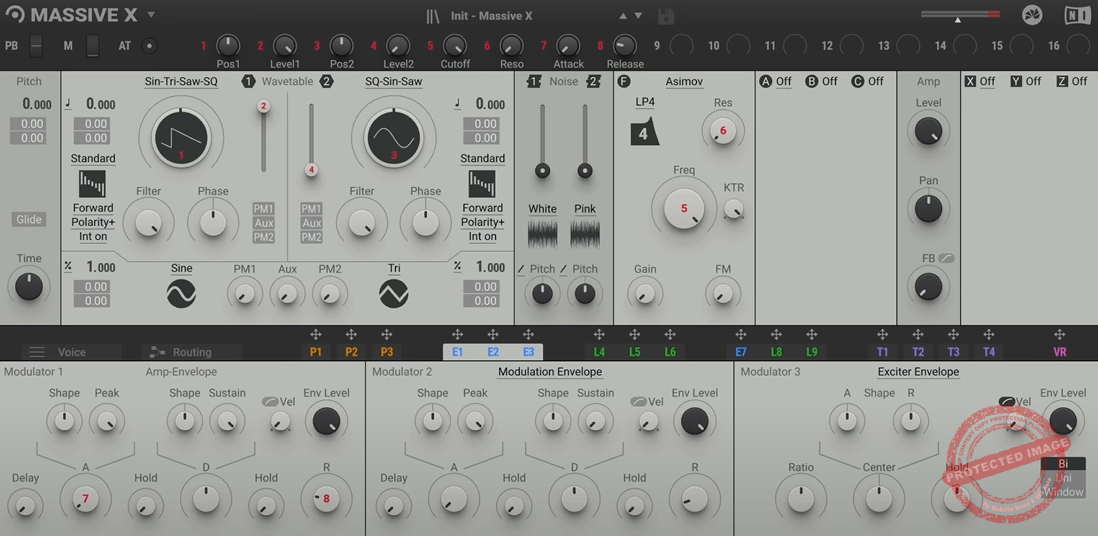
Most Kontakt libraries and NI instruments are designed along the same principles, so their workflow is quite similar to each other. Reaktor and Massive may give some resistance, but overall, NI is also quite intuitive and user-friendly.
Presets and Inspiration
When it comes to presets, both brands deliver in their own way. Arturia’s V Collection is packed with presets that feel like stepping into a time machine. If I need the sound of a vintage Prophet-5 or a fat Minimoog bass, I can find it in seconds. Pigments take it further with presets that cover everything from cinematic atmospheres to cutting-edge electronic sounds.
Native Instruments is no slouch here, either. Massive X comes loaded with presets that are perfect for modern genres like EDM, trap, and ambient. They’re polished, professional, and a great starting point for tweaking.
And then there’s Reaktor’s user library, which is like this endless treasure chest of user-created synths and presets. I’ve downloaded some mind-blowing patches from there that I never would’ve come up with on my own.
Performance: CPU Demands
Here’s where things get practical. Arturia’s synths are pretty light on the CPU, especially their analog emulations. Even Pigments, which is more demanding, runs smoothly on my setup. This makes a big difference when I’m working on projects with lots of tracks.
Native Instruments, on the other hand, can be a bit of a CPU hog. Massive X and Reaktor are powerful, but they’re also heavy. If you’re working on a less powerful computer or juggling massive sessions, you might hit some limitations.
Which Synths Are Right for You?
For me, it’s not about one being better than the other but about what I need for a project. If I’m going for warm, vintage vibes, Arturia is my first choice. Their analog emulations and intuitive design make it easy to dial in timeless sounds.
But when I’m working on something experimental or modern, Native Instruments steps in. Massive X and Reaktor give me tools to push boundaries and create sounds that feel truly unique.
FX Plugins: Native Instruments vs Arturia
Arturia’s FX Collection is my go-to when I’m looking to add warmth, character, or a creative twist. Plugins like the Plate-140 or Tape Mello-Fi bring a vintage vibe that feels alive.
For example, Tape Mello-Fi has helped me transform sterile synths into something rich and textured, especially when I’m working on lo-fi or cinematic projects. The interfaces are beautifully designed and intuitive, so I always feel inspired to experiment.
Arturia’s analog/vintage emulations for effects are also quite impressive. I love PreTridA’s colors and use them often to brighten things up and do mid-side or left-right EQ processing. REV Intensity is just insane! I am a fan of the innovative time-based approach, and the presets the plugin offers.
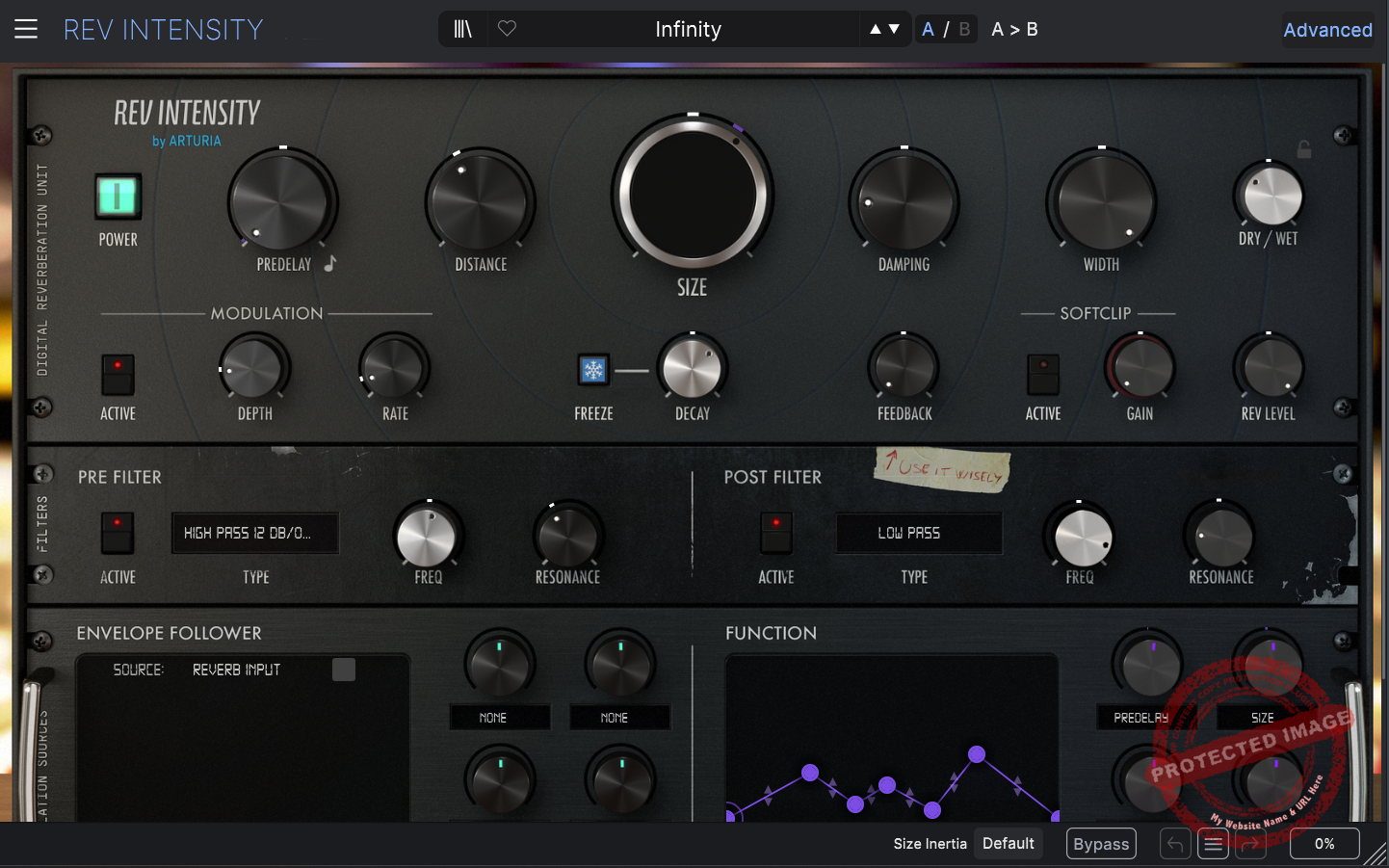
Native Instruments, on the other hand, is what I reach for when I need precision and versatility. Plugins like Raum and Replika XT deliver pristine, modern sound. Raum’s “Cosmic” mode, for instance, is perfect for creating huge, otherworldly reverb tails, while Supercharger GT adds just the right amount of saturation to make a vocal or bassline pop in the mix.
Other than that, Guitar Rig 7 is a pretty solid guitar and bass amp that could become a go-to for any guitarist. Arturia doesn’t have any guitar amp plugin to compare the Guitar Rig 7 with.
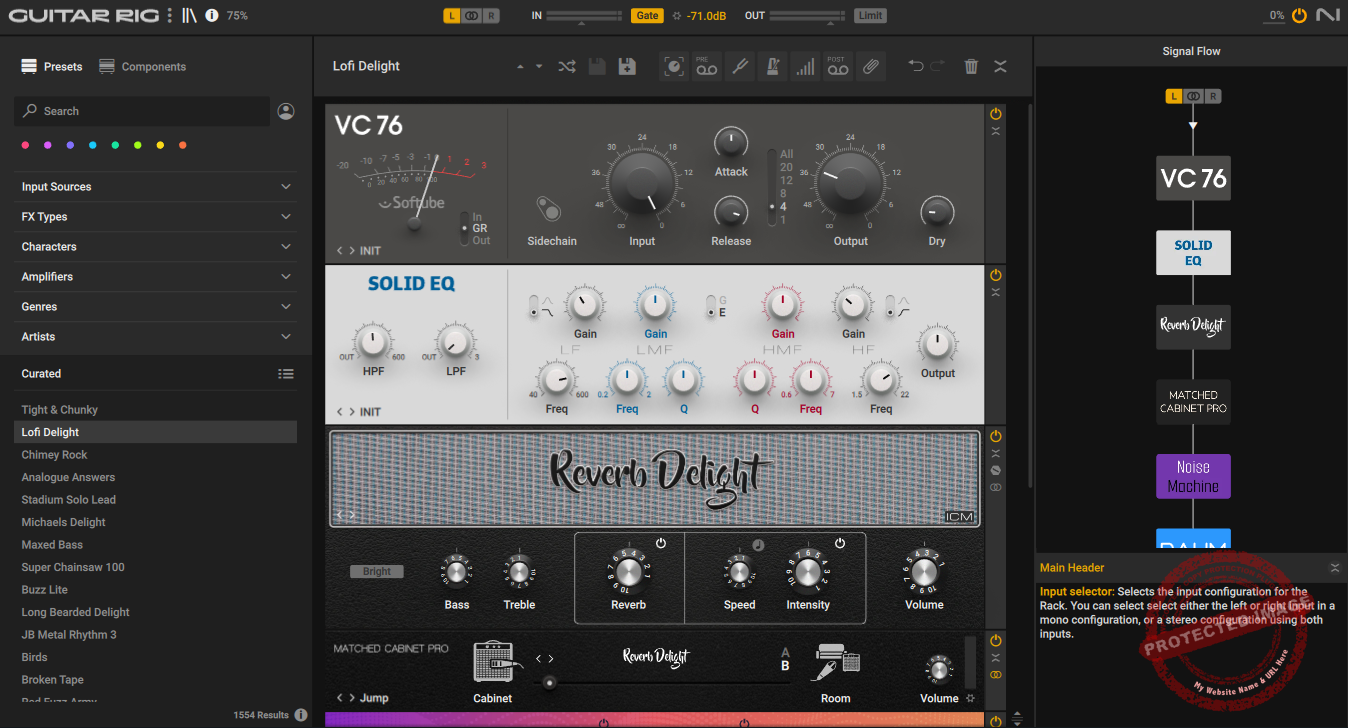
Kontakt Supremacy
Honestly, Kontakt is the backbone of the entire Native Instruments ecosystem and fits well in every composer’s and scoring musician’s CPU. I’ve tried a ton of samplers and virtual instruments over the years, but nothing comes close to the flexibility and depth Kontakt offers.
The library ecosystem is insane. Seriously, it feels like there’s a Kontakt library for everything. Need cinematic strings? Boom, Session Strings Pro has you covered. Want something weird and experimental? Ethereal Earth will blow your mind. And the quality? Top-tier. Every sound feels polished, detailed, and ready to use.
The new features in Kontakt 8 have taken things even further. The Chords and Phrases tools are lifesavers for quickly building ideas, especially when I’m stuck. Plus, it’s super efficient on my system. Honestly, no matter what you’re working on, Kontakt just fits.
Compatibility: Arturia vs native Instruments
|
Compatibility Comparison
|
Kontakt (Native Instruments) | Arturia |
| Operating Systems | macOS 12, 13, and 14 (latest updates); Windows 10 or 11 (latest Service Pack) |
Windows 11+ (64-bit); macOS 11+
|
| Processor | Intel Core i5 or equivalent; AVX-compatible CPU or Apple Silicon required for Massive X |
4-core CPU, 3.4 GHz (4.0 GHz Turbo-boost); Apple M1/M2 CPUs supported
|
| RAM | Minimum: 4 GB; Recommended: 6 GB | 4 GB |
| Storage Space | Minimum: 60 GB; Complete Installation: 300 GB |
8 GB free hard disk space
|
| Graphics/GPU Compatibility | OpenGL 2.1 or higher; Direct3D 11.1 or higher |
OpenGL 2.0 compatible GPU
|
| Audio Support | ASIO, Core Audio, WASAPI | Not specified |
| Plugin Formats | 64-bit VST, AU, AAX |
VST2, VST3, AU, AAX, NKS
|
| Host Application Compatibility | Compatible with most major DAWs |
Compatible with most major DAWs
|
| Special Notes | Apple Silicon compatible for most plugins |
ARM processors not supported on Windows; Compatible with Apple Silicon (M1/M2) via Rosetta or native apps
|
Final Thoughts
For me, Kontakt solidifies Native Instruments’ dominance in certain areas and makes up for all the extra bucks it asks for. On the other hand, Arturia’s focus on analog emulations and vintage vibes fills a different but equally important role in my workflow.
For the effects plugin, I think Arturia is the stronger collection because of its solid collection of EQ, compressors, and saturators. The only downside is that it doesn’t have a guitar amp plugin, like the Guitar Rig 7 by Native Instruments.
For modeling synths, Arturia wins for sure, but one can also find many modeling plugins for Kontakt as well. The quality could be questionable, though. Another advantage that Arturia has that I didn’t mention in the article is its plugin compatibility with its hardware. That is something you could account for.
I hope this detailed comparison gave you clarity over which plugin collection, out of Arturia’s and Native Instruments, is right for you. Ultimately, the choice depends on your style and goals. Whether you prioritize Kontakt’s depth or Arturia’s character, both can be incredible investments in your sound.

Shaurya discovered his passion at the intersection of writing and music. Starting his career as a songwriter and rapper, he gradually picked up FL Studio and soon delved deep into the world of audio engineering and music production. Based in Delhi, India, he has worked with top studios, been featured on Red FM, garnered millions of streams on Spotify, and released music with major labels like Sony and Hitz.
